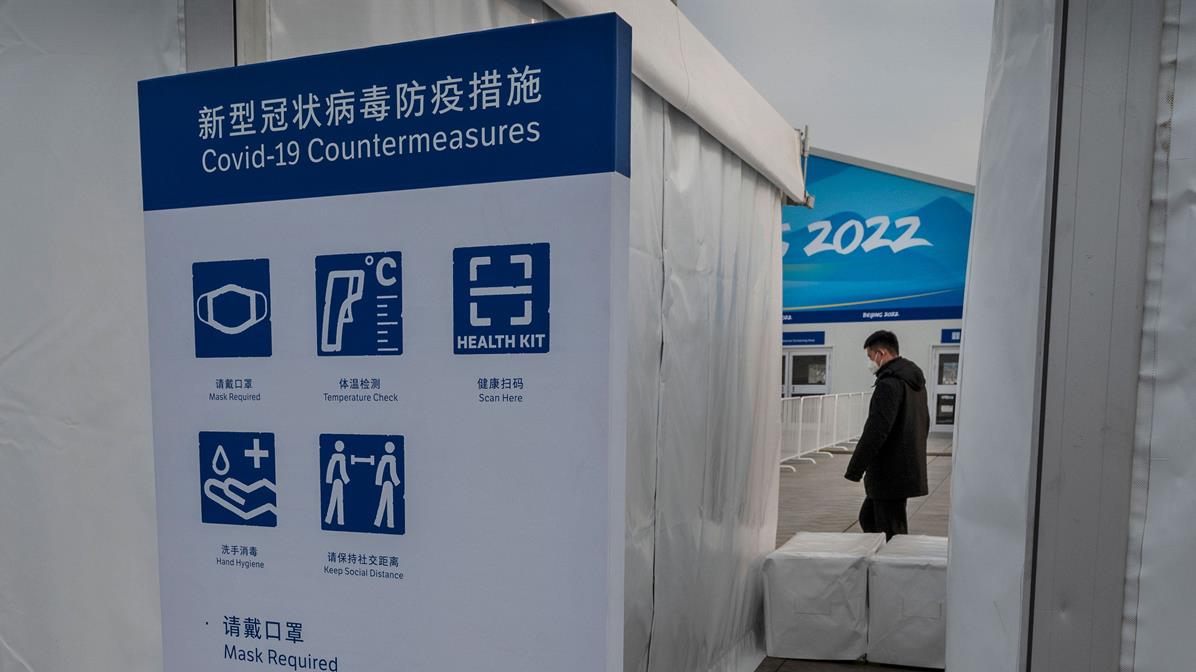COVID−19 testing at Beijing 2022: international standard with safety as highest priority

22 Jan 2022 – The COVID-19 testing for the Olympic Winter Games Beijing 2022 is done based on World Health Organization (WHO) guidance and international standards. This was emphasised by Brian McCloskey, Chair of the Beijing 2022 Medical Expert Panel (MEP), during a series of interviews in the last few days.
“The testing in Beijing is robust and is reliable. It is the same type of PCR test that is used the world over. For the Games, the test is set at a very sensitive level because what we want to achieve is not to get Omicron into the closed-loop system. Extra reagents and different gene targets have been brought in to ensure that, although we set it very sensitively, we can increase the specificity to exclude false positives,” said Dr McCloskey.
PCR tests remain the gold standard for detecting COVID-19 infections. During Beijing 2022, these tests will be processed by laboratories which work with international standard reagents and high-quality devices.
Along with vaccination and the closed-loop system, the comprehensive COVID-19 testing regime is one of the key principles to ensure safe and successful Olympic Winter Games Beijing 2022.
Layers of testing
The Beijing 2022 Playbooks describe clearly the COVID-19 testing regime for the Games participants before and after entering in China.
“There are several layers of testing: the pre-departure testing, the airport testing and the testing individually in the closed loop. At each stage a number of people who might be incubating the virus and could test negative in the previous layer are taken out. So we expect to see the positivity rate going down across those three modalities,” noted Dr McCloskey.
While participants need to have at least two negative pre-departure tests within 96 and 72 hours prior to their departure, they will immediately be tested upon arrival. Games participants are asked to take a PCR test at the airport. Trained customs staff will take an oropharyngeal (throat) and a nasopharyngeal (nose) swab sample, which will be combined for analysis.
Additionally, Games participants will be PCR-tested daily for COVID-19 to minimise the risk of undetected positive cases that could transmit the virus. Medical personnel will take throat swabs at sample collection sites at the Olympic Villages and other specific venues, including accommodation sites.
If a test result is unclear or positive, the participant’s COVID-19 Liaison Officer will inform the person by phone. A confirmatory PCR test will be conducted using a nasopharyngeal sample to rule out any potential false positive.
Athletes and Games participants who test positive and are asymptomatic will be discharged from isolation once they have two consecutive negative PCR test results 24 hours apart.
“We have always said the target is not zero cases; the target is zero spread. Already at the Tokyo Games we knew there would be some people who would come through and they would test positive after they arrived. The challenge is to make sure we pick those up very quickly and that they do not cause a spreading event. We haven’t seen that in Tokyo. Because we test every day, even if somebody turns positive on the test, we know they were negative the day before – and in 24 hours they will not have had time to become infectious.”
Omicron variant
Dr McCloskey explained that the emergence of the highly transmissible Omicron variant creates a different situation, with record infection figures seen globally, which might have an impact on the number of positive results from tests performed upon arrival. But the experiences from the Olympic Games Tokyo 2020 and other major events are still valid.
“We do know that Omicron is more infectious, but we also know that all the standard public health measures that we have all used over the last two years in the pandemic – the social distancing, respiratory hygiene, hand washing, masking, ventilation etc. – they all work for Omicron as they did for previous variants. So the system still works. The testing works and will pick it up early, but we do recognise there may be a shorter incubation period. Therefore, we have to work faster and it is more likely that people who tested negative in the pre-departure tests, for example, can get infected or re-infected before leaving home and might test positive by the time they get to China.”
Medical Expert Panel
Unclear situations following confirmed positive tests can be reviewed by the MEP, composed of 20 members in a combination of virologists, public health and infectious disease experts from China and around the world, including representatives of the International Olympic Committee (IOC), the International Paralympic Committee (IPC) and the International Winter Sports Federations. The panel is chaired by Dr McCloskey. It is the same principle that worked well at the Olympic Games Tokyo 2020 and other sports events that have taken place during the pandemic.
The MEP assessment will include a comprehensive evaluation of each individual’s previous history of vaccination, testing and infection as well as their environment.
Dr McCloskey details the process: “We will be as accurate as possible to ensure we do not let COVID into the closed-loop system, but at the same time not get people excluded who are not really infectious. Anyone can submit their data to the Medical Expert Panel and we will form a judgement: Is it safe to let this person out, is this a case of persistent positive after recovery or is it a case of reinfection?”
“We can look up the history of the test done before. We can look at the Ct values to see if they are changing, if they are they going up. We can look at vaccination history. We can look at all that data and assess: ‘Can we let them into the Village or do we let them into the Village, but under different restrictions to try and minimise the risk?’ The priority has to be to keep the Games safe.”





